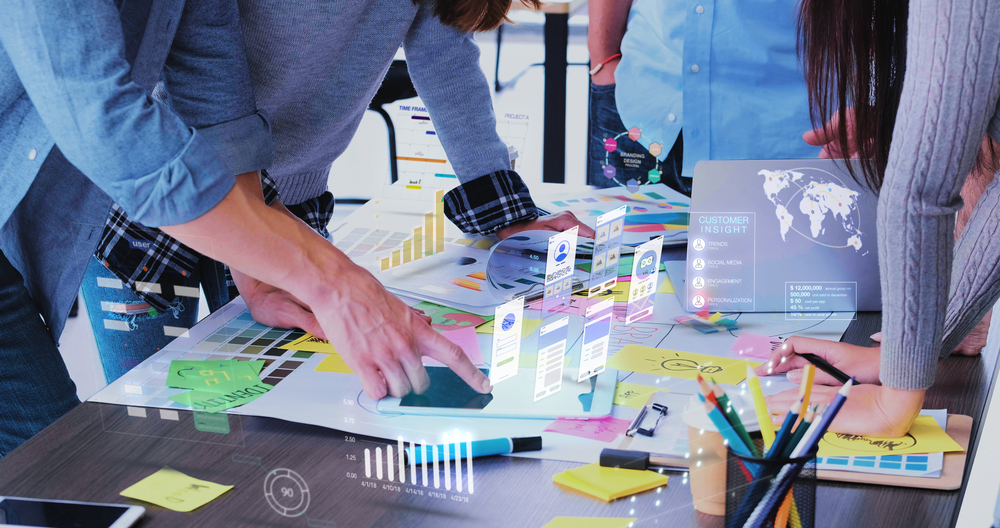Table of Contents
Introduction
Understanding the Relationship Between Innovation and Impact
Innovation and impact are intrinsically connected forces that drive human progress and societal transformation. Transforming Our World Through Creative Solutions Innovation represents the creative process of developing new ideas, methods, or products that address existing challenges or create entirely new possibilities. Impact, meanwhile, Transforming Our World Through Creative Solutions or measures the meaningful change that these innovations bring to individuals, communities, and the broader world.
The relationship between innovation and impact is not always immediate or linear. Some innovations create instant, visible changes, while others may take years or decades to fully realize their transformative potential. Understanding this dynamic relationship helps us appreciate how creative thinking and practical application work together to shape our future.
Successful innovation requires more than just creative ideas; it demands the ability to translate concepts into practical solutions that generate real-world impact. This process involves understanding user needs, overcoming technical challenges, and navigating complex social, economic, and regulatory environments to bring meaningful change to fruition.
Historical Perspectives on Innovation and Impact
Throughout history, innovation and impact have been the driving forces behind major societal shifts and improvements in human quality of life. The industrial revolution demonstrated how mechanical innovations could transform manufacturing processes, leading to unprecedented economic growth and social change. The impact of these innovations extended far beyond their immediate applications, reshaping entire societies and creating new ways of living and working.
The twentieth century witnessed accelerated innovation cycles, with developments in electronics, medicine, and communication technologies creating cascading impacts across multiple sectors. The invention of the transistor, for example, enabled the development of computers, which in turn facilitated innovations in countless other fields, demonstrating how single breakthrough innovations can create widespread ripple effects.
Medical innovations have consistently shown the profound impact that targeted research and development can have on human welfare. The discovery of antibiotics, development of vaccines, and advances in surgical techniques have saved millions of lives while fundamentally changing how we approach healthcare and disease prevention.
The Innovation Process and Its Driving Forces
Innovation and impact begin with identifying problems worth solving and understanding the context in which solutions must operate. Successful innovators combine deep domain knowledge with creative thinking, often drawing inspiration from seemingly unrelated fields to develop novel approaches to persistent challenges.
The modern innovation ecosystem involves diverse stakeholders including researchers, entrepreneurs, investors, and end users who collaborate to bring ideas from conception to implementation. This collaborative approach recognizes that innovation and impact require both technical expertise and practical understanding of real-world constraints and opportunities.
Research and development activities form the foundation of systematic innovation, providing the knowledge base and technical capabilities necessary for breakthrough discoveries. However, innovation and impact also emerge from incremental improvements, creative applications of existing technologies, and novel combinations of established concepts.
Technology-Driven Innovation and Its Societal Impact
Digital technologies have become primary drivers of innovation and impact in the contemporary world. The internet revolutionized communication, commerce, and information access, creating new industries while transforming existing ones. Social media platforms demonstrate how innovation in digital communication can reshape social interactions, political processes, and cultural expression on a global scale.
Artificial intelligence represents a current frontier where innovation and impact are rapidly evolving. Machine learning algorithms are transforming healthcare diagnostics, financial services, transportation systems, and scientific research. The impact of AI innovation extends beyond efficiency improvements to enable entirely new capabilities and approaches to problem-solving.
Mobile technology illustrates how innovation and impact can create particularly powerful combinations when they address fundamental human needs. Smartphones have democratized access to information, financial services, and communication tools, particularly benefiting populations in developing regions where traditional infrastructure was limited.
Innovation and Impact in Healthcare and Medicine
Healthcare represents one of the most critical areas where innovation and impact directly influence human welfare. Precision medicine demonstrates how innovation in genetic analysis and data processing can create personalized treatment approaches that significantly improve patient outcomes while reducing adverse effects.
Telemedicine innovations have expanded access to healthcare services, particularly benefiting rural and underserved communities. The impact of these innovations became especially apparent during global health emergencies, when remote consultation capabilities helped maintain healthcare delivery while minimizing disease transmission risks.
Medical device innovation continues to push the boundaries of what is possible in diagnosis and treatment. From minimally invasive surgical robots to advanced imaging systems, these innovations reduce patient risk, improve treatment precision, and enable interventions that were previously impossible.
Environmental Innovation and Sustainability Impact
Environmental challenges have sparked waves of innovation focused on creating sustainable solutions with positive environmental impact. Renewable energy technologies demonstrate how innovation can address climate change while creating new economic opportunities and reducing dependence on finite resources.
Green building innovations showcase how design and engineering creativity can minimize environmental impact while improving occupant comfort and reducing operating costs. These innovations range from advanced materials and energy-efficient systems to smart building technologies that optimize resource usage in real-time.
Circular economy innovations are transforming how we think about waste and resource utilization. Companies are developing new business models and technologies that turn waste streams into valuable inputs, demonstrating how innovation and impact can align economic incentives with environmental benefits.
Social Innovation and Community Impact
Innovation and impact extend beyond technological solutions to encompass social innovations that address community needs and systemic challenges. Microfinance represents a social innovation that has provided financial services to previously underserved populations, enabling entrepreneurship and economic development in low-income communities.
Educational innovations are transforming how knowledge is created, shared, and applied. Online learning platforms, interactive educational technologies, and new pedagogical approaches are making quality education more accessible while addressing diverse learning styles and needs.
Community-driven innovation initiatives demonstrate how local knowledge and grassroots creativity can generate solutions with significant local impact. These bottom-up approaches to innovation often address challenges that formal institutions might overlook while building local capacity and ownership.
Innovation and Impact in Business and Economics
Business model innovation creates new ways of delivering value while generating economic impact. Platform business models have transformed industries by connecting users, suppliers, and service providers in new configurations that create value for all participants while achieving unprecedented scale and efficiency.
Financial technology innovations are democratizing access to financial services while reducing costs and improving user experiences. Digital payment systems, peer-to-peer lending platforms, and automated investment services demonstrate how innovation in financial services can create broad economic impact.
Supply chain innovations are improving efficiency, reducing environmental impact, and increasing transparency in global trade. From blockchain-based tracking systems to AI-optimized logistics, these innovations create value while addressing concerns about sustainability and ethical sourcing.
Measuring and Evaluating Innovation Impact
Assessing the true impact of innovation requires sophisticated measurement approaches that consider both immediate and long-term effects across multiple dimensions. Economic metrics provide one lens for evaluation, measuring factors such as productivity improvements, cost savings, job creation, and market growth resulting from innovative solutions.
Social impact measurement considers how innovations affect quality of life, access to services, and social equity. These assessments often require longitudinal studies and qualitative analysis to capture the full scope of changes that innovations bring to communities and individuals.
Environmental impact assessment has become increasingly important as sustainability concerns grow. Life cycle analysis and carbon footprint calculations help evaluate whether innovations truly reduce environmental impact or simply shift problems to different stages of the value chain.
Challenges and Barriers to Innovation Impact
Innovation and impact face numerous obstacles that can prevent promising ideas from reaching their full potential. Regulatory barriers, while often necessary for safety and quality assurance, can slow the adoption of beneficial innovations or create compliance costs that favor established players over new entrants.
Funding challenges particularly affect innovations with long development timelines or unclear commercial prospects. Many potentially high-impact innovations require sustained investment before they can demonstrate their value, creating a gap between promising research and practical implementation.
Social and cultural resistance to change can limit the impact of even well-designed innovations. Successful innovation implementation often requires education, training, and change management to help users understand and adopt new approaches effectively.
Future Directions for Innovation and Impact
The future of innovation and impact will likely be characterized by increased collaboration across disciplines, sectors, and geographic boundaries. Global challenges such as climate change, aging populations, and resource scarcity require innovative solutions that can achieve impact at unprecedented scale and speed.
Emerging technologies like quantum computing, synthetic biology, and advanced materials science promise to enable innovations with transformative impact across multiple sectors. The convergence of these technologies may create entirely new categories of solutions that address complex, interconnected challenges.
Innovation and impact will increasingly be guided by principles of inclusivity and sustainability, ensuring that the benefits of creative solutions are broadly shared while minimizing negative consequences for future generations.
Conclusion
Innovation and impact represent the twin engines of human progress, working together to transform challenges into opportunities and ideas into meaningful change. The most successful innovations are those that not only demonstrate technical excellence but also create lasting positive impact for individuals, communities, and society as a whole.
As we face an era of rapid change and complex global challenges, the relationship between innovation and impact becomes ever more critical. By fostering environments that support creative thinking while maintaining focus on real-world outcomes, we can harness human ingenuity to build a better future for all.
The ongoing evolution of innovation and impact reminds us that progress is not automatic but requires deliberate effort, collaboration, and commitment to translating creative potential into meaningful change. Understanding and nurturing this relationship will be essential for addressing the challenges and opportunities that lie ahead.





Pingback: Mastering SEO for Affiliate Marketing (Advanced Strategies) - softdatacore